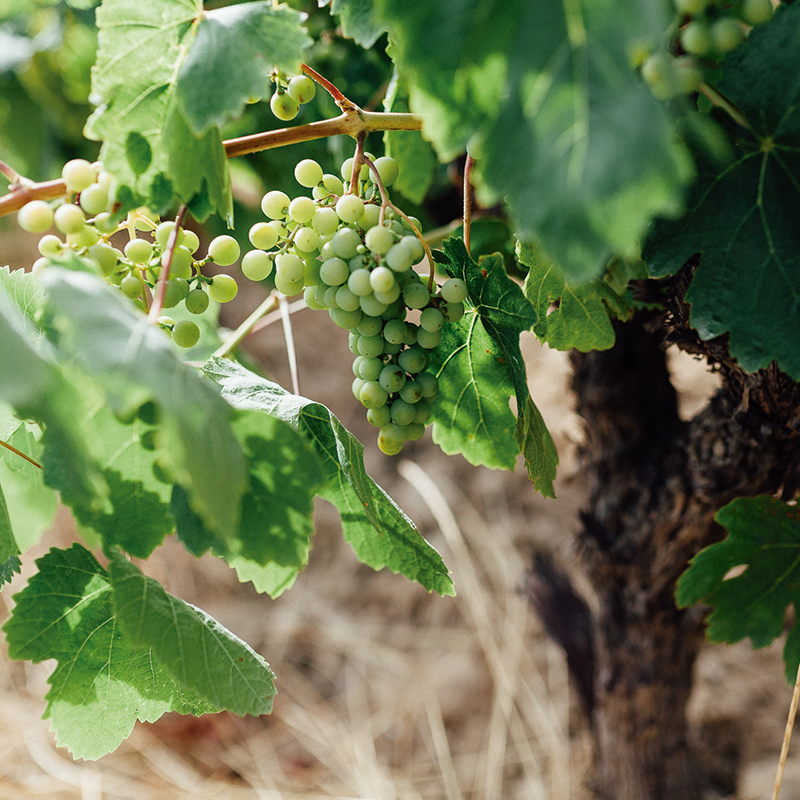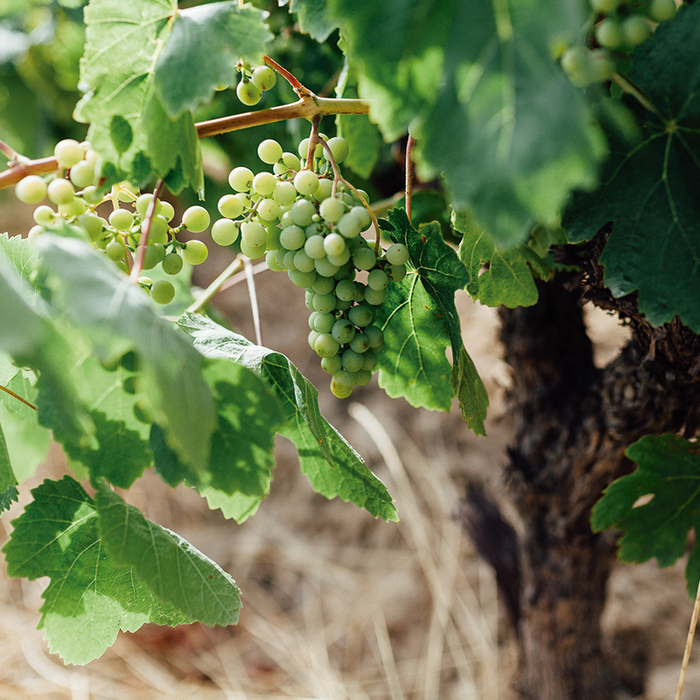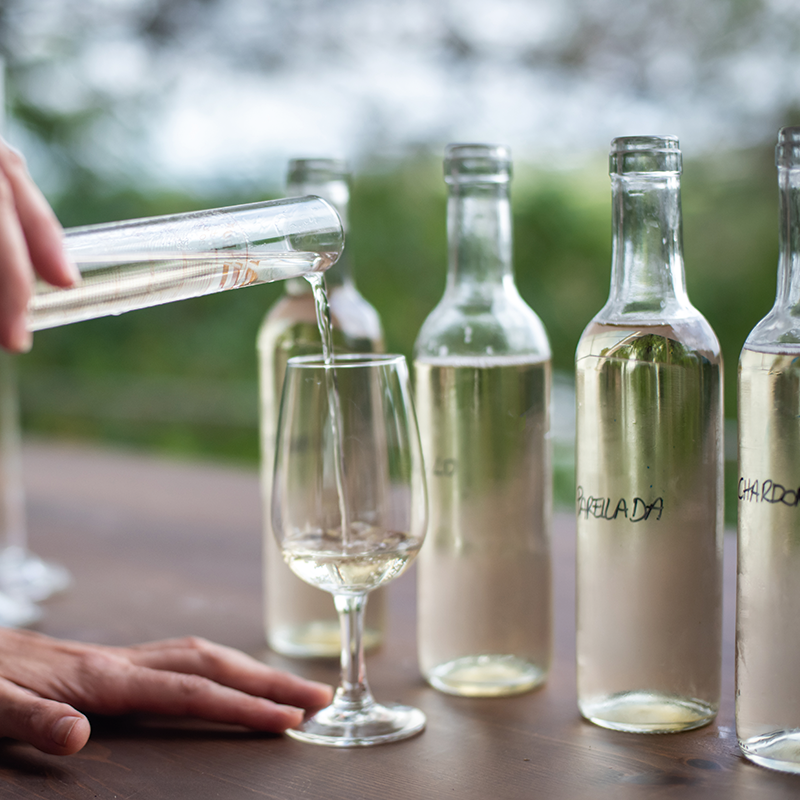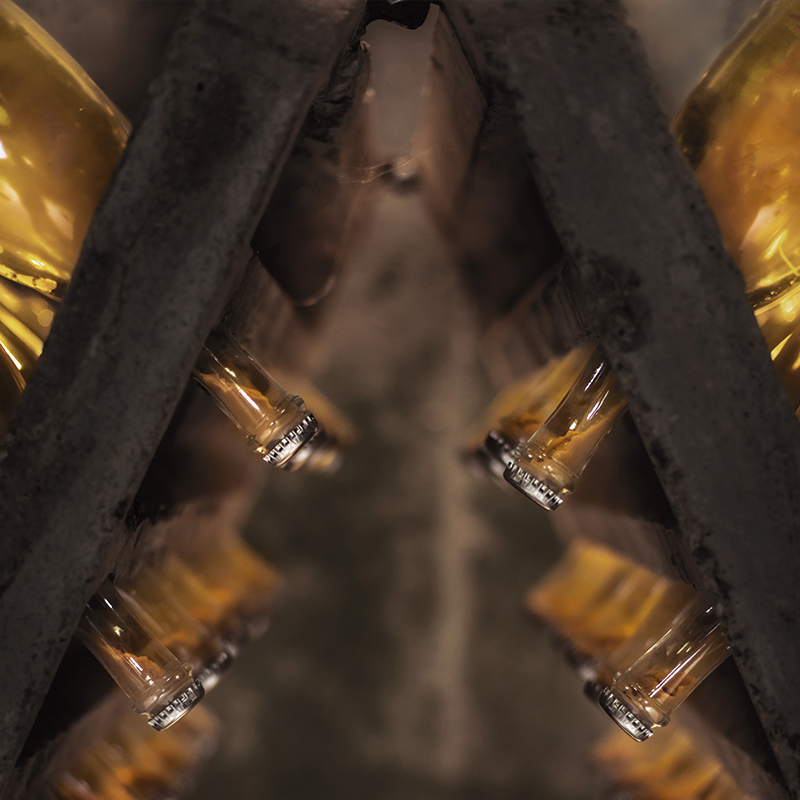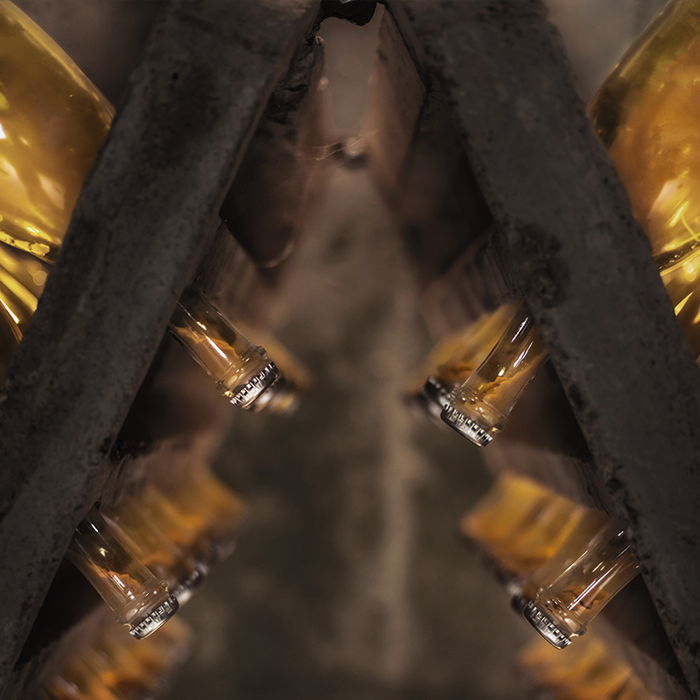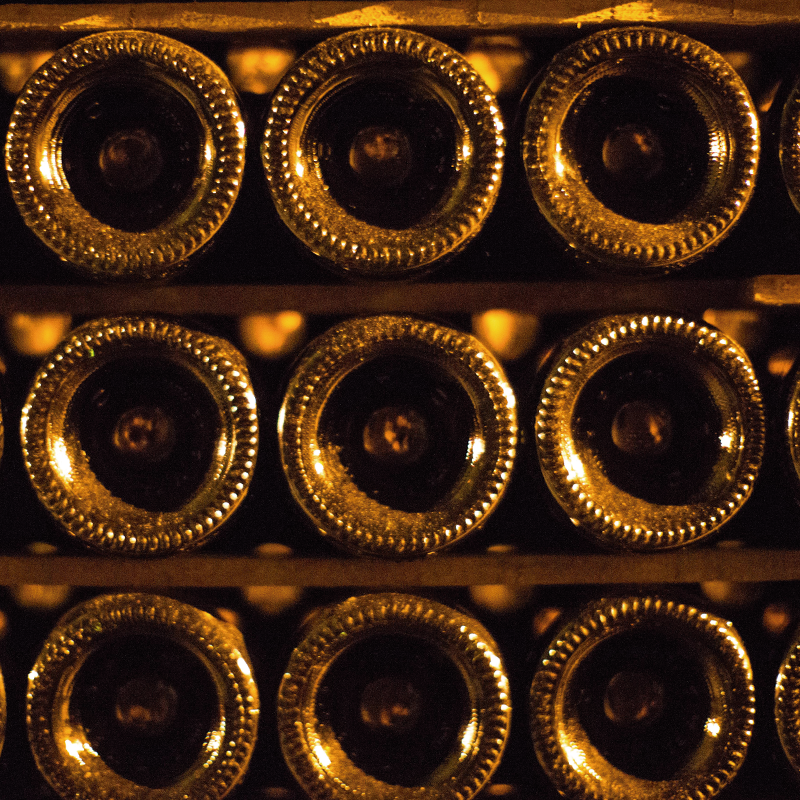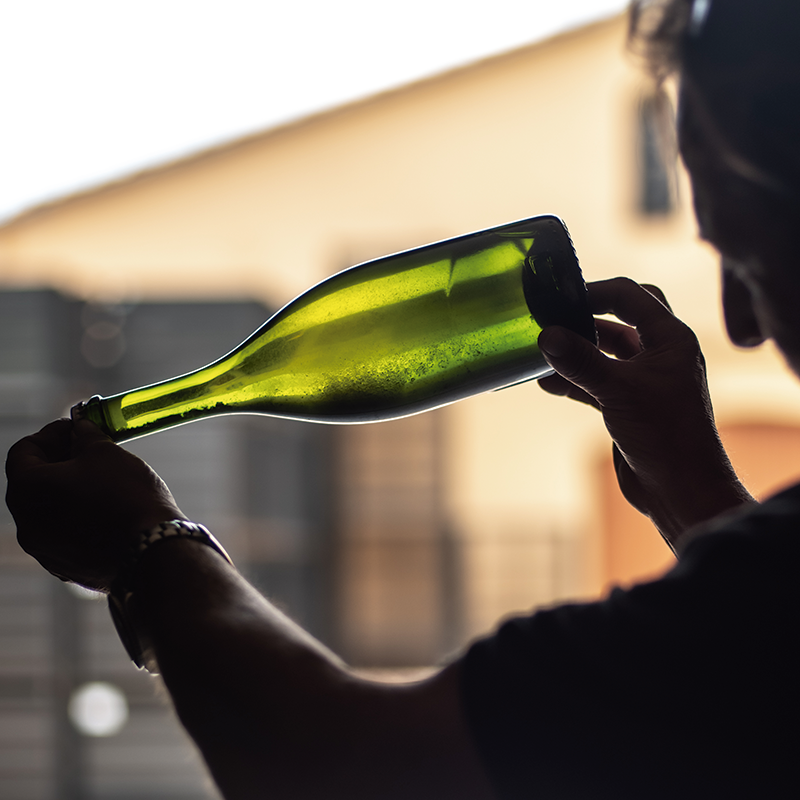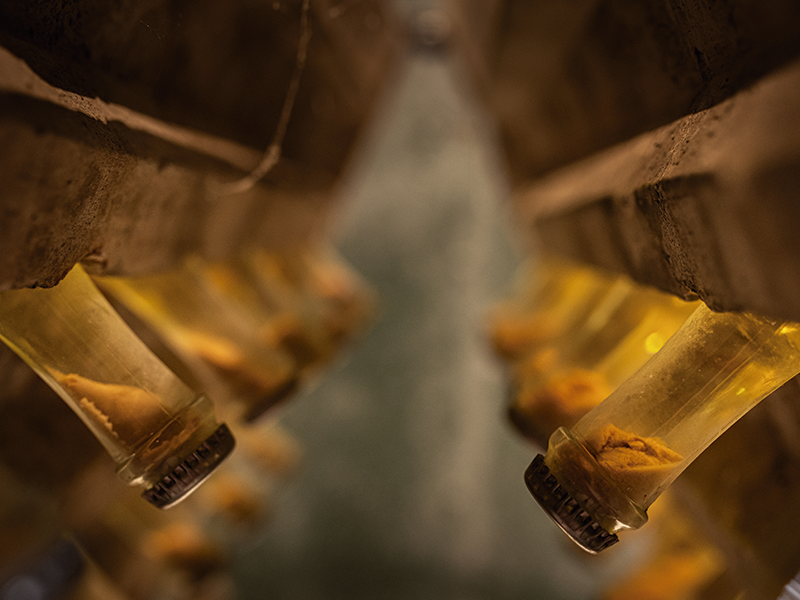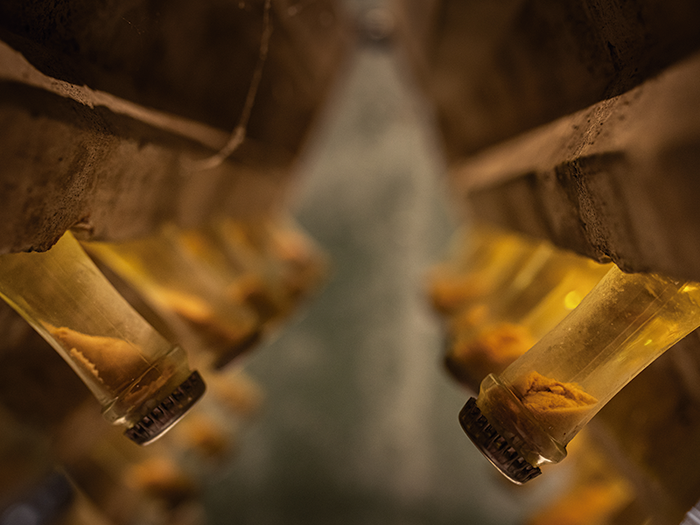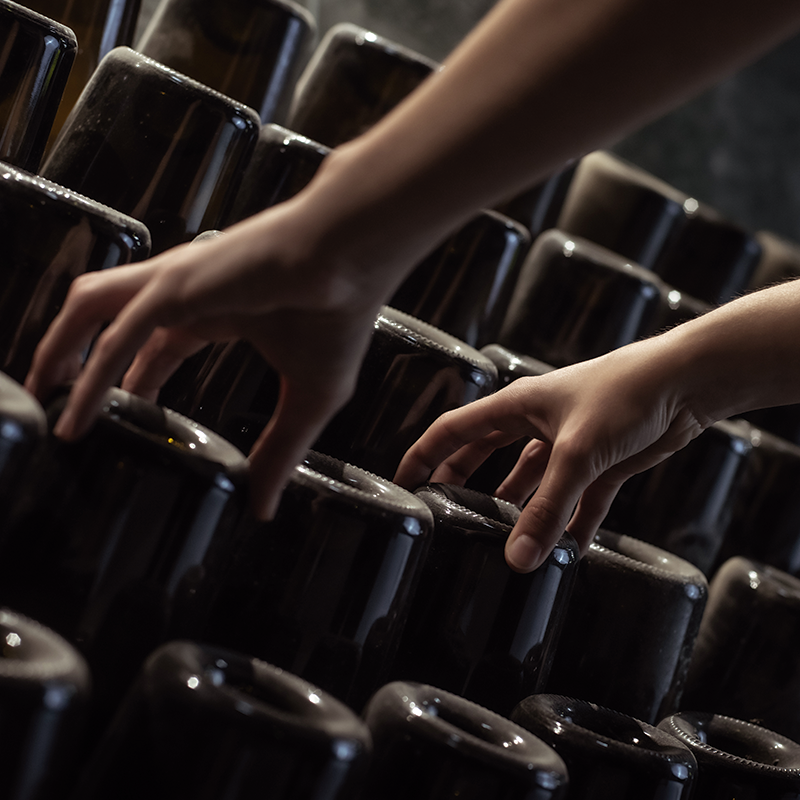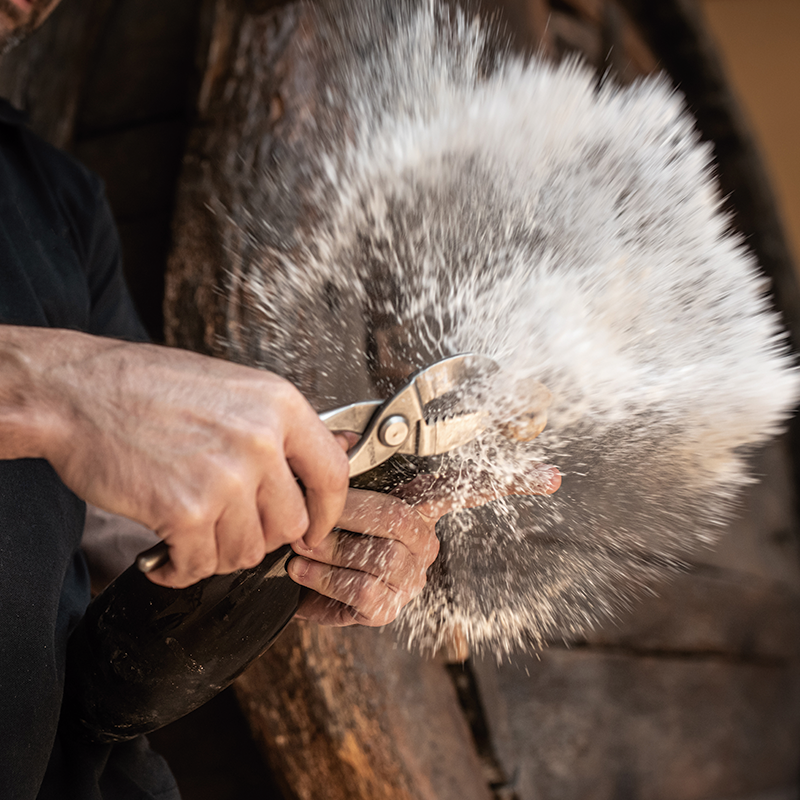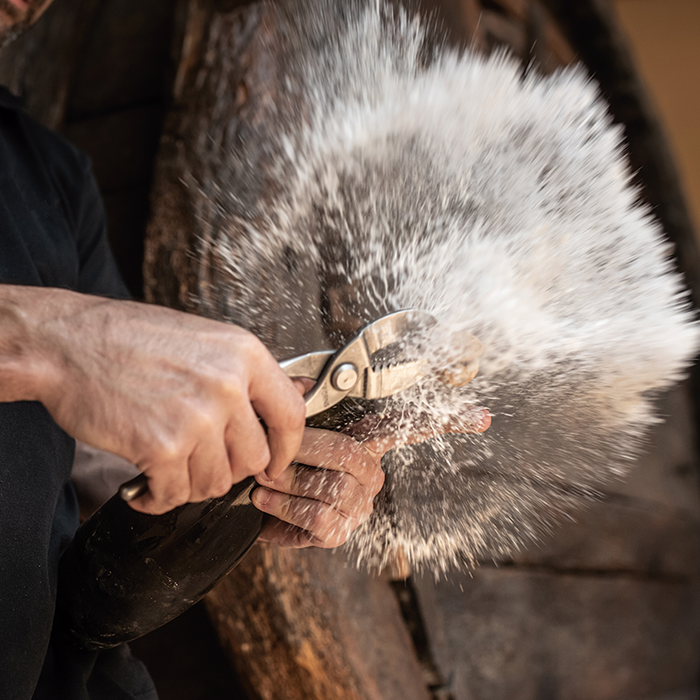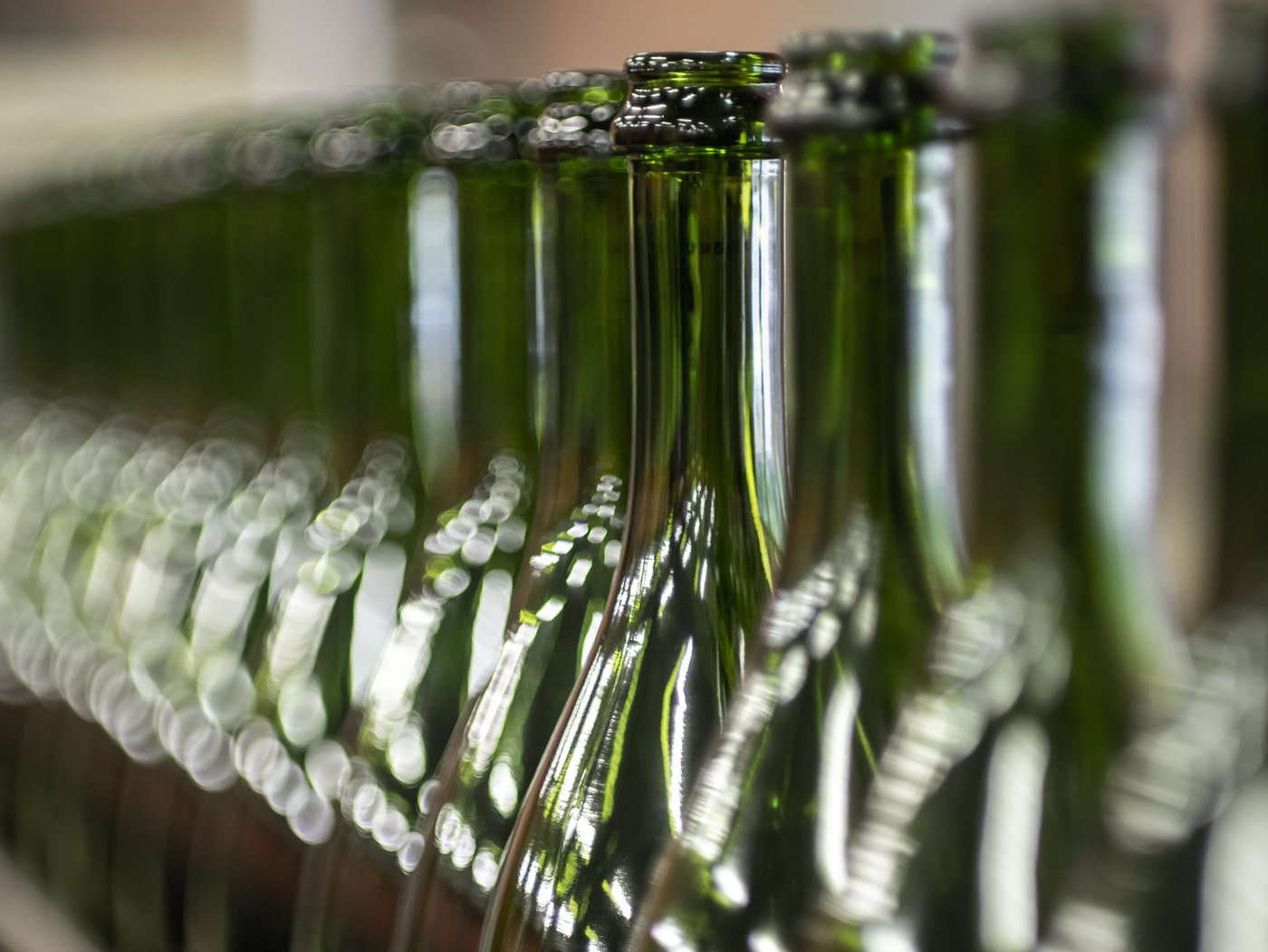Where quality starts
The vineyard is where the production process starts. While it is similar to wine initially, numerous factors make Cava unique and singular.
The first of these is choosing when to harvest the grapes, ensuring a good level of acidity to enable the future aging and double fermentation of what will become Cava. Once the collected grapes have been taken to the winery, the clusters are taken off their stems and the fruit is separated from its stalk. Then the grapes are gently pressed, with a maximum yield of 66%: this ensures that the must (grape juice) obtained is high quality, and suitable for subsequent aging in the bottle.
